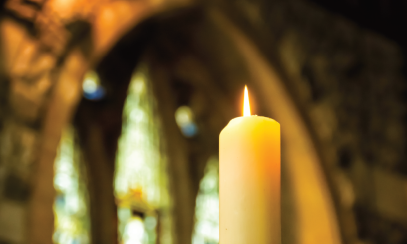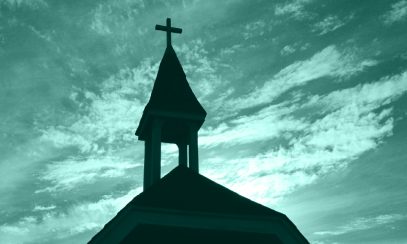Is there truth to the book The Da Vinci Code?
Dear Fr. Joe: I recently read a book called The Da Vinci Code and am very confused and upset. Have you read it? The author states in the beginning that everything he says in there is true. If so, how can we pretend that our faith is real? Help!
Dear Fr. Joe: I recently read a book called The Da Vinci Code and am very confused and upset. Have you read it? The author states in the beginning that everything he says in there is true. If so, how can we pretend that our faith is real? Help!
Thank you for your letter. I have gotten more inquiries about this book than most other topics. I hope that this article is the beginning of a restoration of your faith. Did I read the book? Yes. To date, I have read every book written by Dan Brown, and enjoyed most of them. When I read The Da Vinci Code, I never anticipated that the book would cause such a firestorm.
First of all, let me start off by saying that an absolute must for anyone who has read this book is to read the article Dismantling The Da Vinci Code by Sandra Miesel. You can find it at www.crisismagazine.com/september2003/feature1.htm.
With that, I want to state that some of what I am going to write in this article comes from Sandra Miesel’s article, and the rest comes from my own research. I’ll try to give you some references to help you do research on your own. For the rest of you, let’s establish some key ideas:
Premise one: The book The Da Vinci Code can be purchased in just about any local bookstore. In order to find it, you need to go to the Fiction section. That’s right, folks. It’s in the fiction section. By putting his book in the fiction section, Brown absolves himself of any need to be realistic or truthful, despite his claims of veracity in the beginning of the book. That is an essential premise to keep in mind.
Premise two: The author is clearly no fan of organized religion, particularly Catholicism. In one section of the book, a character explains that “ ... every faith in the world is based on fabrication,” and in his book “Angels and Demons,” Brown explains at great length how he believes “Third-century laws cannot be applied to the modern followers of Christ.” To be clear, even fans of this book comment on its “preachiness.” No opportunity to let the reader know his opinions is passed up by Brown. He preaches as if he has a kind of authority that he despises in the church. The hierarchy seems to bear the brunt of Brown’s rage. He describes the leaders of the Catholic Church – and Opus Dei as well, he seems to have a special hatred for them – as corrupt, misogynistic and violent. I understand that it is politically acceptable to ascribe all sorts of moral horrors to Christian leaders, but I urge readers to remember that judging others so harshly can have bad implications for our souls.
Premise three: Brown’s research is suspect. Again, assuming he was simply attempting to write a fictional novel, then there should be no problem here. The issue seems to be that people are taking his fiction and embracing it with faith that it does not demand. If you look at Brown’s sources, you can see a great many authors and books that most scholars – both Christian and non-Christian – give no credibility. The best example of this would be Holy Blood, Holy Grail by Michael Baigent, Richard Leigh and Henry Lincoln.
OK, the rest of this article is going to contain some “spoilers,” so if you haven’t read The Da Vinci Code and desire to, then you may want to save this particular article until after you’ve read it. Read the bishop’s article instead. It rocks.
With those ideas in mind, let’s look at some of the more outlandish errors Brown made:
The Priory of Sion is a central focus of The Da Vinci Code. In the book, the Priory of Sion is an ultrasecret group that meets regularly to preserve, study and keep secret the great mystery – Jesus and Mary Magdalene were married goddess worshippers who produced heirs to the throne of David in Israel. For a great article on the myth of the Priory of Sion, please go to www.alpheus.org/html/articles/esoteric_histor/richardson1.html. It’s a good explanation of how the myth came about, and it would take too much space for me to cover here.
Now clearly, the idea that Jesus and Mary Magdalene were married is something that the church isn’t big on. Let’s look at the source of this myth in order to debunk it. The primary sources for this are the Gnostic gospels. The book contends that the Gnostic gospels contain “The Truth” about Jesus, and the church worked hard to suppress them. If this is true, then half of the world’s Christian population is in trouble. Check out this lovely exchange between Jesus and Peter in the “Gospel of Thomas”: “Simon Peter said to them: ‘Let Mary leave us, for women are not worthy of life.’ Jesus said, ‘I myself shall lead her in order to make her male, so that she too may become a living spirit resembling you males. For every woman who will make herself male will enter the kingdom of heaven.’” (v. 114)
In the words the great philosopher Bill (of “Bill and Ted’s Excellent Adventure”), “Dude. I so don’t get it.”
Make no mistake; the Gnostic gospels were condemned by the Apostles and their successors immediately after they were written. There was/is no cover-up here. As you will read in the next paragraph, the church had no power to cover anything up in the first 300 years.
Brown contends that the Emperor Constantine forced the church to claim that Jesus was divine. This one can’t survive a logical attack. Remember, for more than 200 years, Christianity was a capital offense in the Roman Empire, and a great many people suffered and died rather than reject Jesus’ divinity. Among those under the reign of Constantine were a great many Christians who had been mutilated and tortured by the Romans for belief in Christ’s divinity. Also, wouldn’t at least some of the Christians alive at the time notice that the entire focus of this new religion had changed, and resist that change? The way Brown writes it, Constantine changed the entire belief structure of Christianity and somehow destroyed every book and killed every person who fought the change. That is not a realistic idea of the fourth century.
Brown describes Leonardo Da Vinci as a “flamboyant homosexual” who was commissioned by the Vatican to create “hundreds” of works of art. (p. 45) I’m afraid Brown gets two strikes on this one. First of all, there was one allegation of homosexuality made toward Da Vinci, but that certainly doesn’t qualify a person as “flamboyant.” Also, Da Vinci was commissioned by the Vatican for one work of art, not hundreds.
On page 125, Brown asserts that the church killed more than five million witches. This one actually feels mean-spirited to me. First of all, if that were true, it would be a demographical nightmare for Europe at the time and the repercussions would still be felt by those of European descent. Also, the witch killing that did occur was carried out by the State and vigilantes – not just the church. Now, I am not defending the actions of the church, but in the same way that you and I don’t want our sins to be exaggerated, we should not allow it to be done to others. Those issues aside, for a non-Christian discussion of the witch killing that includes more accurate numbers, please go to www.gendercide.org/case_witchhunts.html.
I could continue, but alas! I am running out of space. I hope that this article has been helpful. In the meantime, let’s remember to rejoice in what has been handed on to us by the Apostles.
Enjoy another day in God’s presence!



